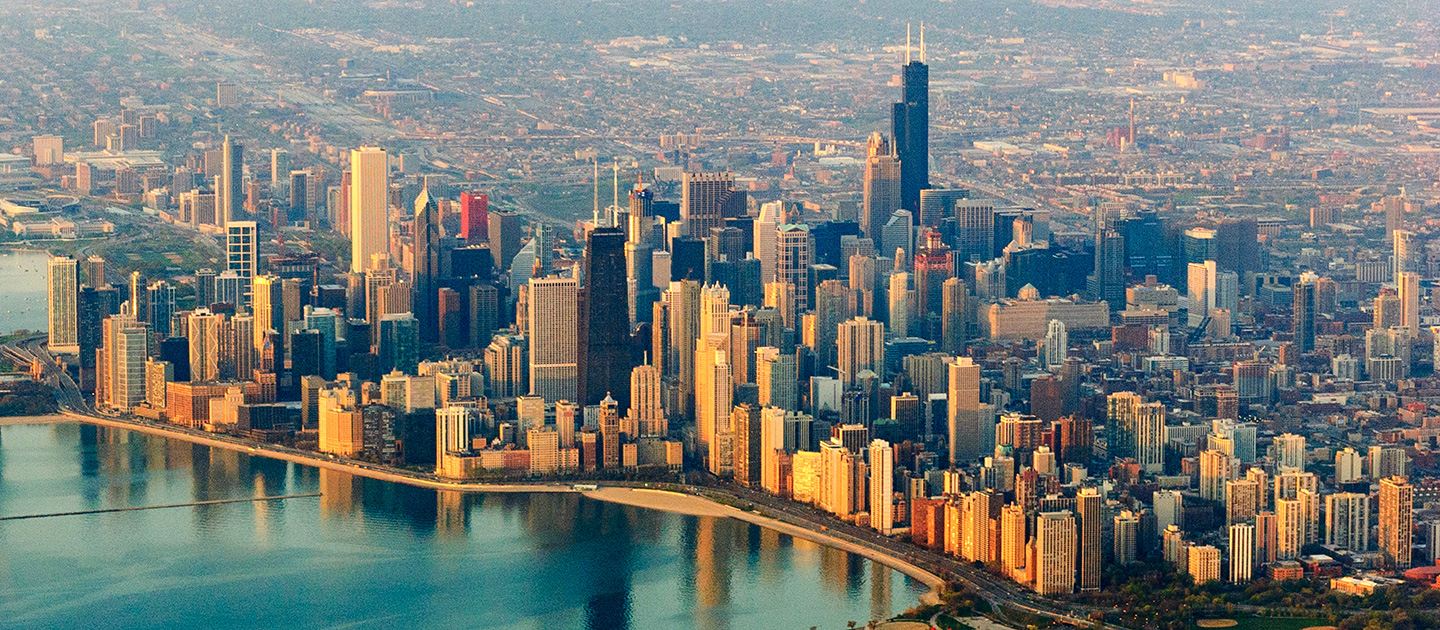Climate Change Could Have Negative Effect on Great Lakes Travel
A team in Professor Luís A. Nunes Amaral's lab simulated the impact of losing 67 percent of direct air routes

The United States’ climate is changing. And that could be bad news for the Great Lakes region’s transportation needs.
Because of climate change, southern and western portions of the country might become unlivable unless there is massive investment in air conditioning, flood protection, and access to water. However, data shows those same regions that are threatened by these changes have rapidly growing populations, threatening to further tax increasingly strained ecosystems.

These shifts will inevitably have consequences. When the areas suffering the greatest challenges are faced with too much to bear, residents will return to land with better access to fresh water such as the Great Lakes region. At the same time, the country’s air transportation network will likely have to be reduced, limiting available travel modes.
Physics and astronomy graduate student Weihua Lei, postdoctoral fellow Luiz Alves, and Northwestern Engineering’s Luís A. Nunes Amaral asked whether knowing the configuration of the air transportation network could be used to predict the routes most likely to be removed. They found that a simple machine-learning (ML) approach using airport-connectivity features and a random forest-type model can be successfully trained to forecast which connections in an air transportation network are most likely to be removed within a one-month time scale. They also found that a model trained on data from any given month could be used to accurately predict the route removals in any other month in the 2005-2021 time period. This was quite surprising to the researchers since this period includes both dramatic changes in the air transportation industry and the disruptions caused by the COVID-19 pandemic.
Armed with this knowledge, the team used the model to forecast what the US domestic air transportation network would look like in 2035 if there was a mandate to reduce it by 67 percent to reduce greenhouse gas emissions. Their forecast doesn’t bode well for the Great Lakes region and cities like Chicago and Detroit that could see an influx of new residents. They found that Amtrak’s 2035 Vision plan would likely be inadequate to serve transportation needs of the region.
“The planned rail network, with its lack of high-speed train connections, could prompt a massive increase in automotive traffic with the corresponding increase in energy consumption and road maintenance costs,” Lei said. “Moreover, as the recent heat wave in Europe has demonstrated, higher temperature can increase the costs of road maintenance.”
Their work, “Forecasting the Evolution of Fast-changing Transportation Networks Using Machine Learning,” was published July 22 in Nature Communications. Amaral is the Erastus Otis Haven Professor of Chemical and Biological Engineering at the McCormick School of Engineering.
In 2021, Amtrak released an expansion plan that would add 30 new and 20 expanded routes. How much of that goal reaches fruition and how much of an impact any progress would make remain to be seen. The team found that the number of driving trips lasting from 3-8 hours would increase if air routes are removed and Amtrak sticks to its 2035 Vision, releasing more carbon dioxide into the air and exacerbating already-existing environmental problems caused by greenhouse gases.
Instead of taking that path, the paper proposed a different form of transportation. Alves said “high-speed rail is a scalable and more environmentally sound approach to transportation than adding cars to the roads and building and expanding roadways.”
Alves noted that their “model cannot provide the answer to how to plan a rail system that will anticipate population and air transportation changes.” The model, however “can help planners build additional scenarios for future needs of the US transportation infrastructure.”